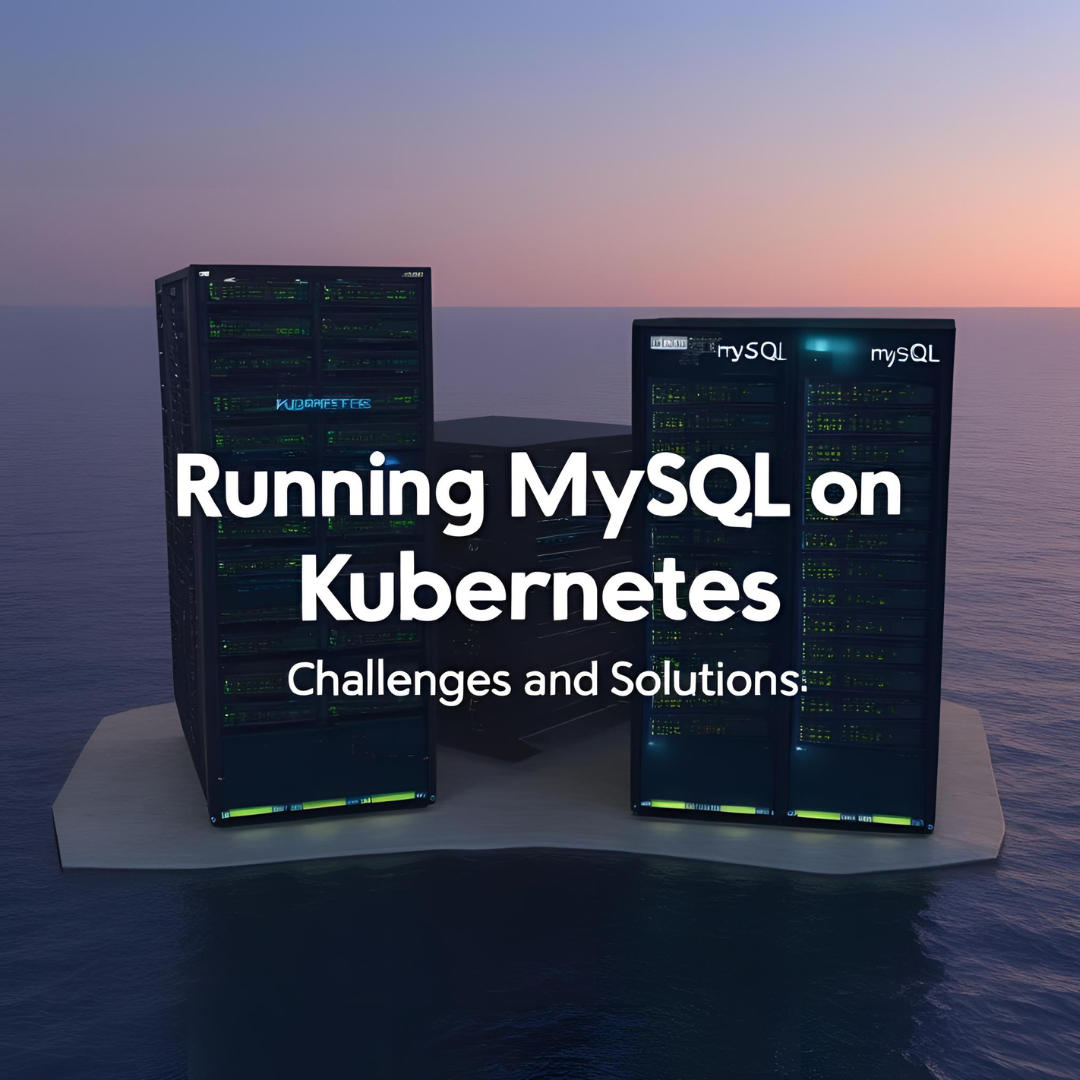Deploying MySQL on Kubernetes offers remarkable flexibility and scalability, but it also presents unique challenges. This article explores the main challenges and practical solutions for operating MySQL databases in a Kubernetes environment.
Challenges of Running MySQL on Kubernetes
1. Data Persistence
Kubernetes is fundamentally designed for stateless applications, while databases like MySQL are stateful and require data persistence. Pods that restart can lose data if not properly configured.
2. High Availability Architecture
Building high-availability MySQL architecture on Kubernetes requires specialized configuration for replication, failover, and automatic recovery.
3. Performance and Storage
Network overhead and virtualization in Kubernetes can impact database performance. Additionally, choosing the right storage option is crucial for optimal performance.
4. Backup and Recovery
Backup and restore processes in a dynamic environment like Kubernetes require different strategies compared to traditional infrastructure.
5. Monitoring and Observability
Monitoring the health and performance of MySQL in a Kubernetes environment requires different approaches and appropriate tools.
Solutions and Best Practices
1. Using StatefulSets and Persistent Volumes
StatefulSets ensure consistent pod identity and predictable deployment order, while Persistent Volumes ensure data persists even when pods restart.
apiVersion: apps/v1
kind: StatefulSet
metadata:
name: mysql
spec:
selector:
matchLabels:
app: mysql
serviceName: mysql
replicas: 1
template:
metadata:
labels:
app: mysql
spec:
containers:
- name: mysql
image: mysql:8.0
ports:
- containerPort: 3306
volumeMounts:
- name: mysql-data
mountPath: /var/lib/mysql
volumeClaimTemplates:
- metadata:
name: mysql-data
spec:
accessModes: ["ReadWriteOnce"]
storageClassName: "standard"
resources:
requests:
storage: 10Gi
2. Implementing High Availability with MySQL Operators
Use specialized Kubernetes operators for MySQL, such as the MySQL Operator from Oracle or Percona Operator for MySQL, which simplify MySQL cluster deployment with high availability capabilities.
# Example installation of MySQL Operator using Helm
helm repo add mysql-operator https://mysql.github.io/mysql-operator/
helm install mysql-operator mysql-operator/mysql-operator
# Creating a MySQL cluster
kubectl apply -f mysql-innodbcluster.yaml
3. Performance Optimization
- Choose the right storage class with high IOPS characteristics
- Use dedicated nodes with specifications suitable for databases
- Configure resource requests and limits appropriately
- Apply affinity rules to prevent MySQL pods from running on the same node
resources:
requests:
memory: "2Gi"
cpu: "1"
limits:
memory: "4Gi"
cpu: "2"
nodeSelector:
disktype: ssd
4. Effective Backup Strategy
- Use solutions like Velero for Kubernetes-aware backups
- Leverage MySQL-specific tools like XtraBackup
- Implement automated backup schedules with CronJobs
- Regularly test restoration processes
5. Comprehensive Monitoring
- Deploy Prometheus and Grafana for MySQL monitoring
- Use MySQL exporters to collect database metrics
- Implement alert manager for proactive notifications
- Apply centralized logging with EFK stack (Elasticsearch, Fluentd, Kibana)
Example MySQL HA Architecture on Kubernetes
For a production-grade implementation, consider the following architecture:
- Primary MySQL StatefulSet with replication
- Service for read/write access to the primary
- Separate service for read-only access to replicas
- Sidecar containers for monitoring and management
- Operator for orchestration and automatic recovery
Conclusion
Running MySQL on Kubernetes does present challenges, but with the right approach and appropriate tools, you can build a reliable, scalable, and easily manageable database environment. The key to success is understanding the stateful nature of MySQL and leveraging Kubernetes features such as StatefulSets, Persistent Volumes, and Operators to address these challenges.
As the Kubernetes ecosystem continues to evolve, solutions for running databases on this platform are becoming increasingly mature, making it an increasingly attractive choice for MySQL deployments in modern environments.


Leave a Reply